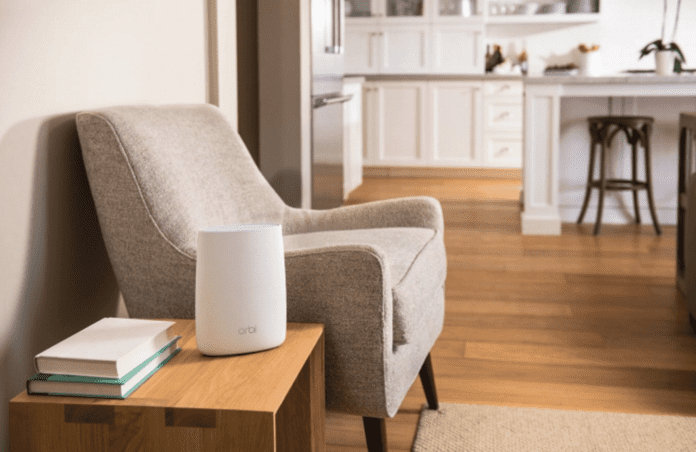As consumers add more devices to home networks, Wi-Fi networks could struggle to keep up. To address this problem, as well as the frustration association with Wi-Fi dead spots, Netgear is launching a new product designed to tackle the problem by creating a mesh network using “satellite” routers.
With its Orbi Wi-Fi System, Netgear is using a tri-band Wi-Fi approach to provide more consistent coverage throughout a home. A dedicated channel connects the Orbi router with what Netgear calls a “satellite.” According to the company, the dedicated connections “is similar to a virtual wire” that “ensures far-reaching coverage.”
The Orbi system comes with one router and one satellite said to cover up to 4,000-square-feet under a single SSID. Compatibility with the 802.11ac standard supports Wi-Fi speeds up to 3 gigabits per second.
“In designing Orbi, Netgear has applied lessons learned from two decades of home Wi-Fi innovation to address the current network challenges of architectural design, dense building materials and large square footage,” said David Henry, SVP of home networking devices for Netgear, in a statement. “Additionally, today’s home networks are now expected to support more devices all of which are competing for your bandwidth. So, the emphasis should not only be on Wi-Fi coverage itself, but also the performance at the furthest edge of that connection. For example, imagine the ability to stream your latest video binge in [high definition] from poolside or streaming music over Wi-Fi to the basement.

To improve home Wi-Fi coverage, Netgear proposes satellite routers
ABOUT AUTHOR
